(Our friend Gorger from Norway sings the song of his people in this 22nd installment in his ongoing series reviewing releases we’ve overlooked. To find more of his discoveries, type “Gorger” in our search bar or visit Gorger’s Metal.)
When realizing I had four pieces of True Norwegian Black Metal to share with you, I obviously decided to pile them together. I’ve sorted them alphabetically, allowing me to finish of with a favored newcomer. All the others are veterans, each with a more or less significant background and history.
BEASTCRAFT – THE INFERNAL GOSPELS OF PRIMITIVE DEVIL WORSHIP
Norwegian Beastcraft was formed in 2003 by Tsjuder‘s Trondr Nefas (R.I.P.) and Sorath Northgrove (Hagl, Vulture Lord, et al.). During ten years, they managed to release a pair of albums and a good handful of other releases. Four years after the band broke up, the last chapter in the saga of Beastcraft is bestowed upon the non-worthy, consisting primarily of material based on re-surfaced demo recordings signed Trondr.
For those who have no knowledge of Beastcraft, they’re one of the bands that have carried the torch for Darkthrone‘s primitive, icy, minimalistic and misanthropic style from the early and mid-nineties. I haven’t heard Into the Burning Pit of Hell (2005), but the unmistakable Darkthrone style is evident on Baptised in Blood and Goatsemen (2007).
The song Demonic Perversion that follows shortly after the intro Aapenbaring (Revelation) leaves no doubt. As expected, an arch-blasphemous hymn with raspy sharp guitars and rasping vocals is revealed, addressed to lord Satan in devout reverence. The song carries a certain touch of Natassja In Eternal Sleep. Surprisingly, this formula is not followed in the lion’s share of the eight songs, although most have sequences with equivalent full throttle.
Like the pioneers of necrotic black metal, Beastcraft knows how to create dynamic groove that prevents monotony. The fastest song material goes straight for the throat, but similar savage force has been done almost ad nauseam by far inferior Darkthrone clones. Thus a growth-period was required before I could fully endorse the material. As expected and desired, it picked up nicely with several spins. There are, however, a few other aspects that primarily make the album a definitive winner.
One is the proportion of tracks and sequences that actually stand out, even if the first impression didn’t necessarily indicate this. Already in Deathcraft and Necromancy we hit a tough vein of lead, where moods seep out slowly as toxic gases. Subsequent The Fall of the Impotent God, as well as Reborn Beyond the Grave, have some of the same effect, albeit not in as viscous form. Concluding, The Beast Descends is practically angelic, in a devilish way, and other songs blend these expressions with good structure. The diversity gives the album a lively vitality.
The other is that even the most conventional infernal high-octane throat-attacks are carried out with an authentic immersion. A timeless sensation of sadistic evil brutality executed with an effort marked by genuine commitment helps make The Infernal Gospels Of Primitive Devil Worship pretty fucking killer.
Lars Fredrik Frøislie (Angst Skvadron, In Lingua Mortua, and more) has mixed and mastered the album. The man has previously been involved in the band, and handled the drums under the name Ghoul. It sounds crass, primitive, and unpolished, while the dynamics are truly cared for. With ample DR10 you can safely crank it up and blast the volume without damaging both speakers and eardrums.
The Infernal Gospels Of Primitive Devil Worship was released on CD and LP. The latter in 500 copies. Both with bonus DVD containing three live recordings, two interviews, and a rehearsal recording.
The Infernal Gospels Of Primitive Devil Worship was released by Pulverised Records on April 7th.
ENDEZZMA – THE ARCANE ABYSS
Endezzma was born in the ruin of the band Dim Nagel when Sorgar formed the band in 2005. We’ll take a closer look at the Norwegians’ second album, and cruise through over ten years of band history in a disrespectful pace.
Besides Endezzma front-man Sorgar, Dim Nagel consisted of Trondr Nefas and a pair of guys from Kvist. The band was started in 1993 and released two demos the following two years, before they eventually split up.
A new incarnation under the new moniker released the EP Alone in 2007. This signified cold, primitive, and necrotic black metal, at least if we ignore the fairly prominent bass, something we may do as the sound wasn’t particularly bass heavy. This was followed by their debut album Erotikk Nekrosis in 2012, which I at the time regarded as more pleasing to the eye than the ear. The album undoubtedly has qualities, but I’ve never grown very acquainted to it.
Nearly four and a half years later, the expression is not very recognizable. The music is more melody-affected and the sound has undergone a change that could be compared to a jump from a cross between Watain‘s Rabid Death’s Curse and Casus Luciferi to Lawless Darkness. Or something along that line. The band have nevertheless kept a good deal of the compositional structuring.
The Arcane Abyss consists of black metal with an airy feel in the riffing. We don’t find the most intense tremolo-picking, but rather fiery melodies that sparkle like tongues of fire in the night. Like unpredictable flames or a fighter pilot on LSD, the music suddenly changes direction uncontrollably. We’re even presented brief solos fairly frequently in the album’s first half. Nevertheless, it’s of course still black metal the band reel off. The drumming is fast, powerful, and diverse, the music has an aggressive, reckless slant, and Sorgar‘s dry and snarling voice has a devilish touch. Not too dissimilar from Nattefrost of Carpathian Forest, for lack of a better example.
The album’s first half (counting the single track Morbus Divina, released along with a late Nefas song a month earlier) has a hint of black’n’roll, with somewhat progressive structures and vital antics based on blazing melodies and diabolic attitude. After this, Sick Kulta Lucifer creates a moderate transition with its dark, doomy, and infernal profane appearance. It’s a less vivid, more gloomy band that continues after this. The proggy structures persist, but towards the end, the music takes a turn and moves more in the direction of Tulus.
The difference is not overwhelming, but Endezzma show multiple sides through eight songs with strong identity. Those who don’t end up enjoying everything might perhaps consider the album a bit wobbly, but it’s not schizophrenic, and I find each song, and thus the entire material as a whole, to measure up strongly.
The Arcane Abyss was released by Pulverised Records on March 31th.
ÖRTH – NOCTURNO INFERNO
Now according to the complete alphabet, comprising Æ, Ø & Å, Örth should come last, as Ö is just another way of writing Ø. Unless it’s only a decorative metal umlaut. But never mind, I’ll adapt to your primitive ways of spelling.
Örth was started by V-Rex in Bergen, Norway in ’92/’93. After a while, bass player Ares (Aeternus) and drummer Grim (Borknagar) joined the team. Both associated with Gorgoroth and Immortal. Örth was one of the west coast city’s earliest black metal bands, but their only album, Nocturno Inferno, recorded in the middle of the nineties, was never distributed according to plan. In this respect, this is among the most authentic tnbm recordings you’ve probably missed out on.
When manic depressive Erik “Grim” Brødreskift took his own life in 1999, the band was left for dead, until a few years later being restored as Arvas. Enough history. Time to get steeped in sonic historical flavor.
Nocturno Inferno is a record that probably would have been a more cult album by now if the distribution had not failed. As a 2017 release it risks drowning in the crowd, whilst in 1996 it would have made a bigger impact. In that sense, it would have been more interesting to hear from one of those who ended up with a rare original or at least a decent copy 20 years ago. You’ll have to settle for me, though.
The forty-five minute album opens serene and evocative in the intro Hymn Des Mortes Pt. 1, where only strings prevail. In the second half of the album we also find Part 2, a leisurely two-minute clip with acoustic guitar, and Part 3, an eight-minute-long calm song. The latter is performed with reasonably sharp guitar in combination with fair and fairy-like choral female vocals. The guitar rolls like billowing knife blades. Still, it’s eccentric and peculiar, as in a very strange dream with a disturbing soundtrack. Just at the very end, the knife grows serrated teeth as a little bit of riffing takes place.
This is still the exception to the rule. Between Hymn… Pt. 1 and Hymn… Pt. 2, we find five songs, four of which are entirely of the type you’d expect. Feverish hell-fire, flashing like lightning, swirling as northern lights during a sun storm. Satan is loose, and cannot be restrained. Right in the middle of these songs, we find Bonded, which seems more… bound… with its feet on the ground. The song reflects demons parading in step. It’s slower. Darker. More evocative. Filled with and soaking the listeners in a pleasant arrogant sense of one’s own spiritual power.
After “Anthems of The Dead Pt. 2“, Path Of Sorrow, Hymn… Pt. 3, and Den Gamle Manns Profetier (The Old Man’s Prophecies) carry the coffin into the grave. Path Of Sorrow portrays far deadlier riffs. Ares has surely gotten his will here, for this is definitely in line with Aeternus, who has also used sequences similar to Hymn… Pt. 2 many a time. It’s aggressive, misanthropic as a lycanthrope, and mercilessly murderous, no doubt, and Ares has, as far as I understand, written one song on the album. No doubt which one.
“The final prophecy from an old geezer” opens pretty much like Hymn… Pt. 3 finishes, with fair mildly unsettling arias from Synnøve Ugelvik. The song stands out. From most stuff, actually. The first half opens fast and tight like a box of anchovies and basically has quite an odd psychedelic touch. The second half gives the expression a turn on a dime without sounding artificial. The transition flows as naturally and comfortably as sensually heated water around the equator. Figuratively speaking. Delicious swaying tones with a mild folk-touch riffs calmly, while the mountain troll roars in anger because you’ve gotten away alive. (The mountains became so much more unsafe when the trolls discovered that Christian blood tastes anemic. The government ought to hire more troll hunters!)
Nocturno Inferno was, timely and rightfully so, recorded with Pytten in Grieghallen. It was recorded in two sessions; October 1995 and February 1996. That the sound wasn’t spoiled by polish is of course not a problem, but the album is a bit murky, and it could advantageously have been a bit sharper round the edges. Beyond that, this is a historic treat that also delivers lots of diversity in a true Norwegian lapskaus.
Cold School Black Metal \m/
Nocturno Inferno was released by Satanic Art Media on April 7th.
Take a look at the two other videos on Satanic Art:
• Stylish promotional video with annoying volume mix.
• Interview with V. Rex.
WHOREDOM RIFE – THE WORSHIP OF IDOLS INSTEAD OF GOD; IDOLATRY (EP)
Nidaros (Trondheim) spent some time climbing up to the same level and diversity as other parts of our elongated vast tundra, but gradually strengthened a firm position as suppliers of pitch black disgust. Meet Whoredom Rife, a new but particularly solid act, and memorize the name, as the duo will soon be launching their first full work, and based on this four-track EP, that’s something you don’t want to miss out on. ‘Cause this is true necrosadistic black metal!
With four songs lasting from five to six minutes, the EP reels off a respectable 22.5 minutes in total. Enough to form its own little grim universe, yet brief enough to leave the listener with a taste of blood that doesn’t quench the hunger, but rather leaves a burning, insatiable lust; a blood-thirst for more.
Messrs V. Einride (instrumentation) and K.R (vokills) have apparently not left any earlier mark in the form of participation on releases. All the more impressive then that The Worship of Idols Instead of God; Idolatry shines brightly of Lucifer’s light from the very first second, and keeps at it without a single dull moment until having crossed the finish line. V. Einride is the mastermind behind the creation. He has written both music and lyrics: The music based on a burning desire to preserve the ideology and atmosphere of the nineties in a nostalgic and conservative manner, and lyrics allegedly wholly or partly founded on Codex Regius, a collection of Old Norse texts, such as Völuspá and Hávamál.
The men waste no time, but come out guns blazing, firing off cascades of icy sadistic riffs and ferocious manic blasting after very few seconds of Fyrstens Land (Land of the Fürst (Ruler)). The vocals that soon settle on top of pouring, bombastic, and aggressive black metal, is of a beastly character. K.R gives fundamentalistic misanthropy a voice through atrocious diabolical roars, whose deranged intonation gives associations to inhuman entities. Beneath horrid and foul bellowing, a fierce and deafening blaring flows past with massive mass and frantic pace, like a gigantic waterfall of sharded glass. Minimalistic and sombre melodies cut fringes in the soul. Towards the end, powerful moods of arrogant and cynical pride have been formed, strengthened by nifty, subtle use of synth.
Gitt til Odin (Give to Odin) once again provides full throttle from the start. Whilst hectic cascades of jet-black furore again wash over the listener, the melodies form savage, stout, and proud moods honoring Alföðr Óðinn, Wōden, god of wisdom, king of Valkyries and Einherjers. All songs have their own identity, while the interaction among them forms a cohesive whole. You can flush clichés like the whole being greater than the sum of its parts or shitty pretentious phrases like “synergy effect” down the drain, along with uniform religious togetherness and hipster-popularity. Whoredom Rife offers resounding heretical fury which is as infectious on the listener as bubonic plague. We’re witnessing pure, unadulterated hatred in the form of controlled sonic clamor. I’m filled with delicious adrenaline, pumping around, filling me with intoxicating raving glee and malice. The music is genuinely pissed off, and can’t be misinterpreted as pompous or feigned.
The sound echoes in unbridled uproar, as if rabid giants shudder mountains with sledge-hammers and throw boulders in rage. The candle flickers in the devastating pummeling thrust from the speakers and cast shadows as of the devil on the wall. Thought and Memory blares forth in a breathless pace, but calms the pace after a few minutes. Gradual transitions step the tempo down toward Hel, where gloomy moods, physical bass, and exquisite rhythms create an invaluably vile and deeply memorable atmosphere. Eponymous Whoredom Rife clings on to the dim doomy mood with rolling rhythms, dystopic riffs, and demon-possessed vocals. After a brief and calm sequence, as of devilish spiritualism, the final sprint is completed as a haughty stage, a victory lap. Whoever isn’t left with jaw dropped, and a diabolical grin, simply don’t like authentic black metal!
The upcoming album Dommedagskvad (Poems of Doomsday) is just around the corner and is scheduled to be released by Terratur Possessions in mid-May. You can check out the previewing Beyond The Skies Of God and Svik (Treachery). Meanwhile, check out coal-black, satanic, infernal, and masterfully nuanced black metal via the utterly superb The Worship of Idols Instead of God; Idolatry, which was released by Terratur Possessions on September 15th.
Hear the two first songs, Fyrstens Land and Gitt til Odin:


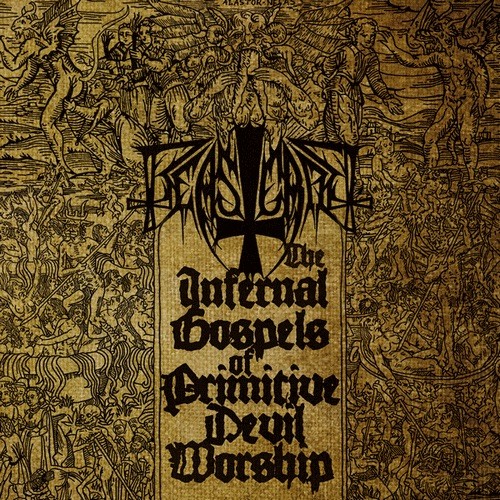
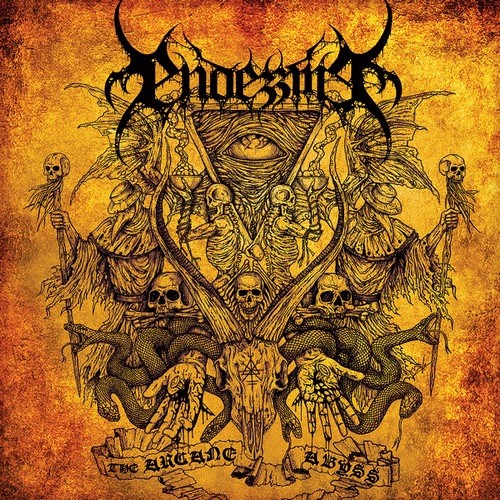
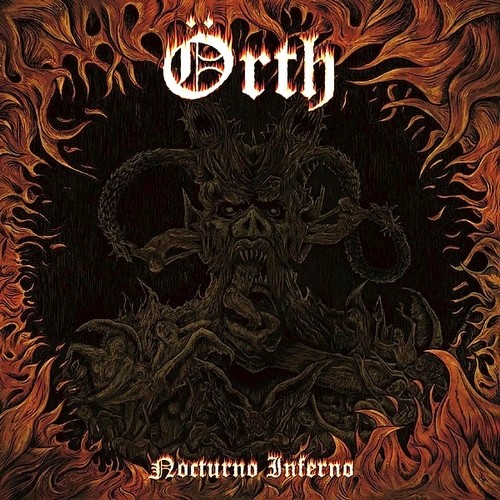
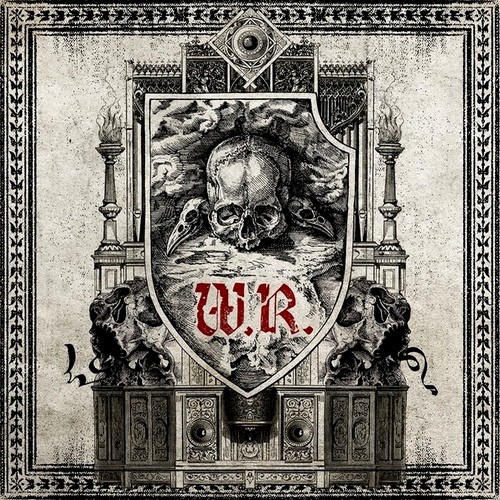
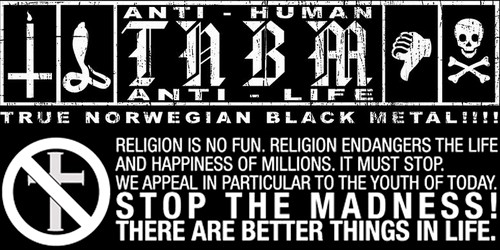
As a guy living in Trondheim, it baffles me that I have not heard of Whoredom Rife. Better late than not at all I guess, as it is seems it’ll find its way into my evergrowing music collection.
I miss Trondheim. I was born and raised, and enjoyed a fantastic youth there, but I’ve been living in Bergen ever since. I can’t recall how I came across Whoredom Rife myself, but I remember being set on fire immediately. A fantastic EP!